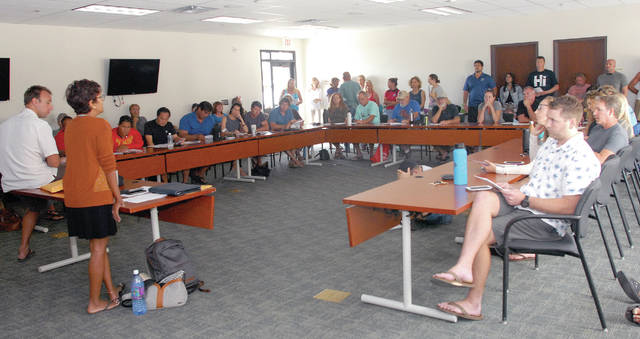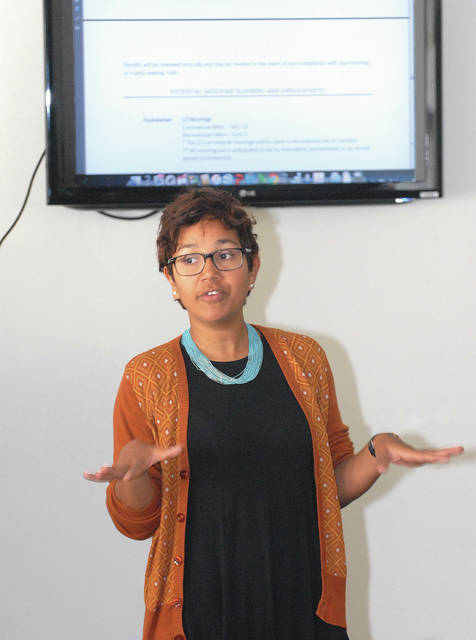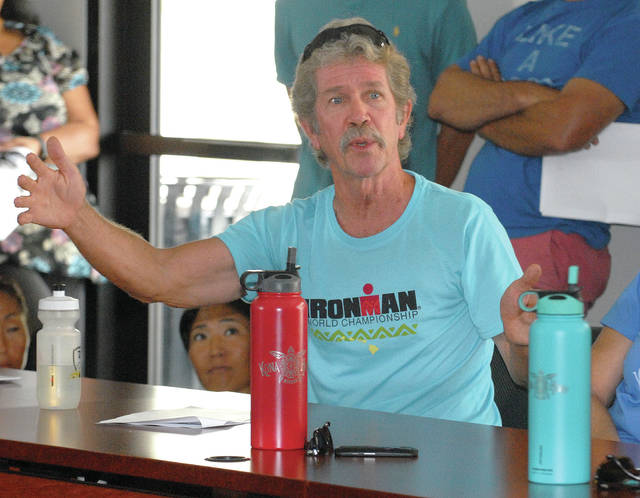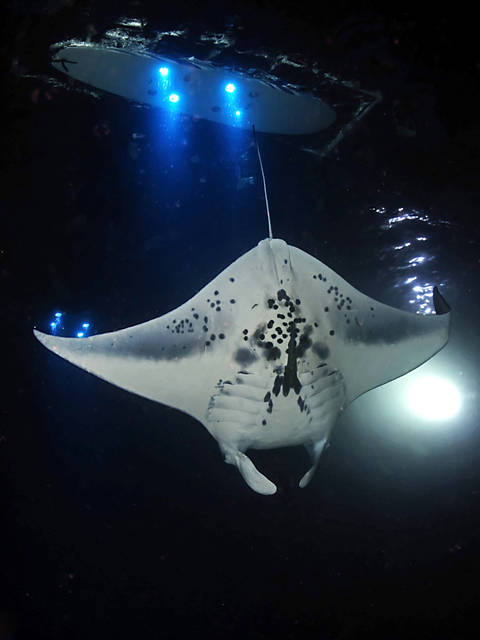Manta tour rules debated: State trying to balance access, protection
KAILUA-KONA — Restricting access to popular manta ray viewing sites will radically affect business, many local tour operators said Saturday.
“I think there’s a heightened level of frustration, today in particular, as we’re getting closer and closer to draft rules coming down,” said Manu Powers of Sea Quest in Keauhou after a meeting in Kailua-Kona. “We’re talking about a lot of livelihoods.”
The DLNR Division of Boating and Ocean Recreation called Saturday’s meeting to provide an update on rules that would putter tighter restrictions on manta ray viewing tours, a popular tourist activity in the area. The division is still looking for ways to minimize the impacts of new rules that will regulate manta ray tours in Hawaii.
Tour operators packed the community meeting hale at the West Hawaii Civic Center to learn about any changes to the proposed rules and discuss ways to protect the manta rays while also keeping business afloat.
As part of the draft rules, new moorings would be installed at both Makako Bay and Kaukalaelae Point, two popular sites for manta ray night tours. Saturday, DOBOR rules writer Maria Gaydos announced plans to have a total of 13 moorings at each site, one of which at each site would be reserved for recreational purposes.
However, live boating, anchoring and rafting — the practice of tying vessels together — would be prohibited, having the net effect of reducing the number of vessels at each location. Gaydos said she hopes to submit the draft rules to the attorney general by the end of this month.
Operators would also be required to get special “manta viewing” permits and would only be granted access to one of the two locations.
The proposed rules would also restrict certain activities at the sites. At Kaukalaelae, for example, manta-related scuba activities would be prohibited.
But because tour companies would be restricted to just one permit, those operators who run in Kaukalaelae then would only be able to run snorkel tours.
But with 26 moorings total and far more tour operators, simply assigning out moorings would drastically hurt some local companies’ ability to stay in business.
Gaydos though offered a compromise.
“Really, truly my goal is everybody gets a permit,” she told the crowd.
One possibility would be for operators to scale back operations and go out three nights a week, which would allow two operators to share a mooring by using it on alternate days. Sundays would be reserved exclusively for recreation.
Gaydos said she received feedback from operators that said that could be a possible option, but many at the meeting were skeptical of how it would work, particularly the idea of restricting commercial access on Sundays.
“To me, it’s like, for just the safety of the mantas, that opening up a Sunday free-for-all with nobody there that really knows what they’re doing,” said Jason Thurber of Hawaii Oceanic. “And we’re all professionals, the reason that we have this industry is because we are professional guides and captains and it’s not something you should just show up and do.”
Others brought up the possibility that forcing operators to reduce operations could ultimately force some to go into risky situations, like going out in poor conditions, because they are already only limited to three days a week to run tours.
Powers, after the meeting, said limiting operations to three days a week would make things very difficult for Sea Quest, which employs more than 30 people.
“We go doing manta tours seven nights a week, sometimes two times a night, with multiple vessels,” she said. “So for us, if we were to get an every-other-day permit and be able to only go for half that time if we’re sharing the permit, that would significantly impact our income and our ability to employ residents.”
While she supports the need to manage resources and care for the mantas, she said there needs to be consideration for how big the industry has become without incident.
Thurber, meanwhile, said that while DOBOR has done a good job of addressing some of the big concerns, there are still unresolved issues.
That includes whether snorkelers will be required to all meet at a “campfire,” one of the issues that kicked off the rules making process in the very beginning.
While the draft rules would prohibit subsurface lighting on vessels, the rules seem to still allow someone to set up lights just off the boat.
“So really what I’m seeing is some bureaucracy. They’re saying things but not nailing it out so that it’s a guarantee that the core issues are addressed,” said Thurber. “But being that so many issues are being addressed and they have so much on the table, I’m very happy with their efforts and, you know, it’s hard to please everybody.”
Keller Laros, founder of the Manta Pacific Research Foundation, meanwhile applauded DOBOR’s efforts with the rule making.
“First of all, I’m really happy to see the state making progress on this,” he said.
In 2003, the foundation started working with the West Hawaii Fisheries Council to get manta rays protected in Hawaii. That goal was realized in 2009 and Laros said the state is continuing to take steps to protect the species.
“I know things like this don’t happen overnight and it’s going to take compromise on a lot of people’s parts,” he said. “But at this point, having seen it go from one boat once a night back when I first started this in 1985 to over 20 boats and hundreds of people in the water, it’s time for somebody to come in to help manage this, because the free market isn’t going to do it.”






